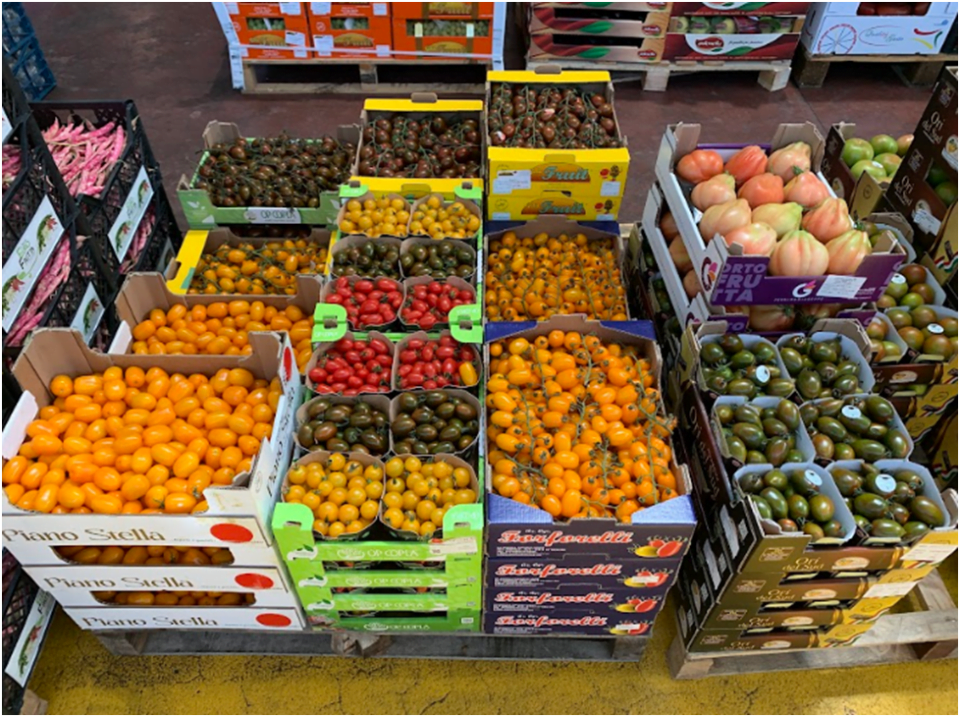Italy is one of the biggest players in the global fruit and vegetable market. In 2022, the volume of just external trade in fruits and vegetables (fresh, dried, and frozen) in Italy totaled $11.6 bln (exports of $5.9 bln and imports of $5.7 bln).
Italy is one of the biggest players in the global fruit and vegetable market. In 2022, the volume of just external trade in fruits and vegetables (fresh, dried, and frozen) in Italy totaled $11.6 bln (exports of $5.9 bln and imports of $5.7 bln).
For comparison, Ukraine had a turnover of $1.5 bln in external trade ($400 mln of exports and $1.1 bln of imports) a year before the russian invasion. Uzbekistan and Georgia have even less significant trade: in 2022, their turnover in fruits and vegetables amounted to $840 mln and $350 mln, respectively. The comparison is even more impressive when adding the internal trade turnover, which is as well much higher in Italy!
Centro Agroalimentare Roma is one of the centers of fruit and vegetable trade in Italy, provides the largest platform for wholesale trade in the country, and is the third-largest wholesale market for agricultural produce in the EU in terms of trade turnover and space.
On July 10, 2023, one of EastFruit team members, together with the participants of the FAO Investment Days, took part in the business tour to the wholesale market in Rome. Below you will find a short photo report, which allows having a look at the center of the fruit and vegetable trade in Italy during one of the hottest periods of the year.
The wholesale market from an aerial view:

The wholesale market has two pavilions for fruit and vegetable trade. They can be seen in the lower part of the picture, and their cumulative area totals 140 ha.
Centro Agroalimentare Roma also plans to construct a new pavilion for fruit and vegetable trade on an area of 62.5 ha. It will be situated to the right of the main buildings, in the area currently occupied by green fields.
Nevertheless, old pavilions will continue their operations, with the trade there organized as usual. The new building will focus on new approaches to fruit and vegetable trade: e-commerce, state-of-the-art technologies in warehouse logistics, innovations, etc.
Other buildings in the plan represent a fish pavilion, as well as different fruit and vegetable packing houses and logistics hubs.
Trucks in a rush of entering the market territory:

By the way, in contrast to many other wholesale markets in the world, Centro Agroalimentare Roma does not work at night. As explained by the wholesale market’s representatives, a new generation of buyers and sellers is not eager to come to the market at night. Thus, the fruit and vegetable trade lasts from 12:00 to 18:00. Meanwhile, the fish pavilion works as usual at night and in the morning: 02:00-07:30.
Buyers must pay for their entrance to the market, while sellers pay rent for trading space and services. The market is also open for ordinary residents of Rome or its suburbs, but only for a certain period on Sunday. In this case, the entrance fee totals 3 euro per person. At other times, trade happens between growers or wholesale companies and buyers (small supermarket chains, HoReCa enterprises, owners of fruit and vegetable stalls, retail market operators from Rome and nearby cities, etc.).
At the entrance, there is an informational center for delegations and the wholesale market’s partners:

It is perfect for small business meetings and letting delegations know more about the wholesale market’s work principles and other information:
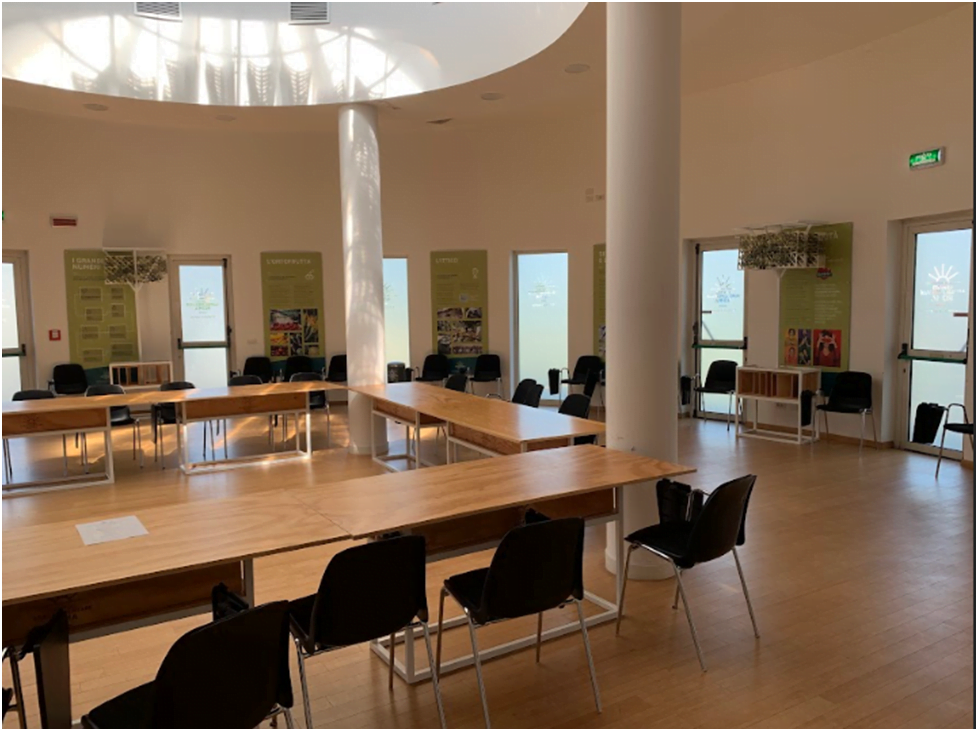
Centro Agroalimentare Roma uses solar panels as parking sheds, which are spread over the whole territory of the wholesale market:

Calculations show that solar energy currently covers from 20% to 30% of the wholesale market’s demand for electricity, and the plans are to increase this share up to 50%!
The central entrance to the fruit and vegetable pavilions and the outside view of one of them:
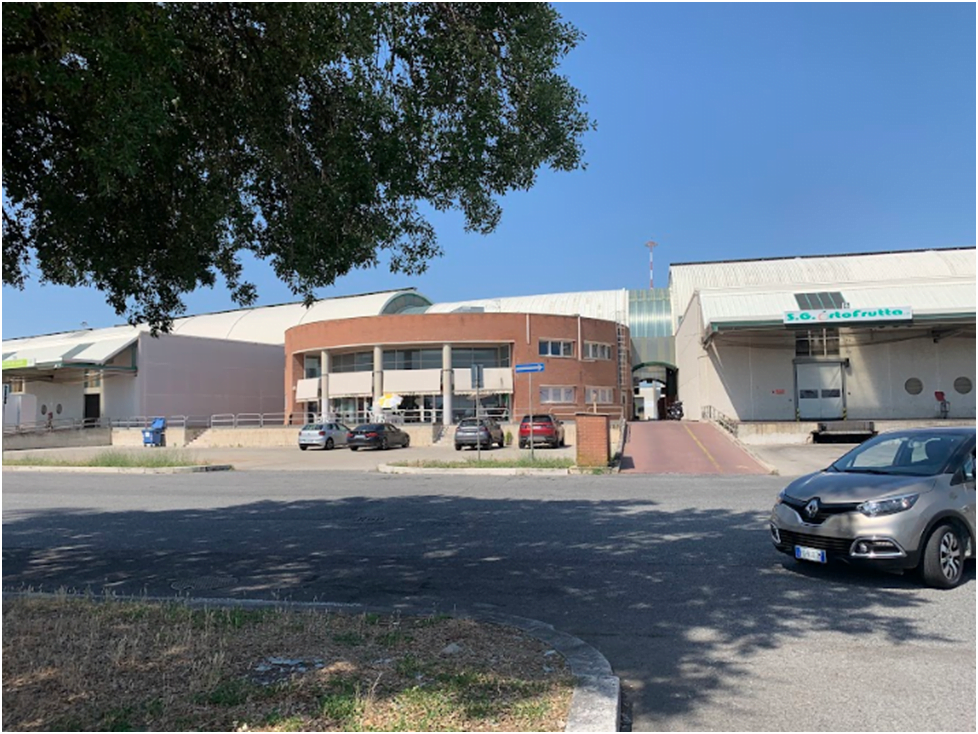
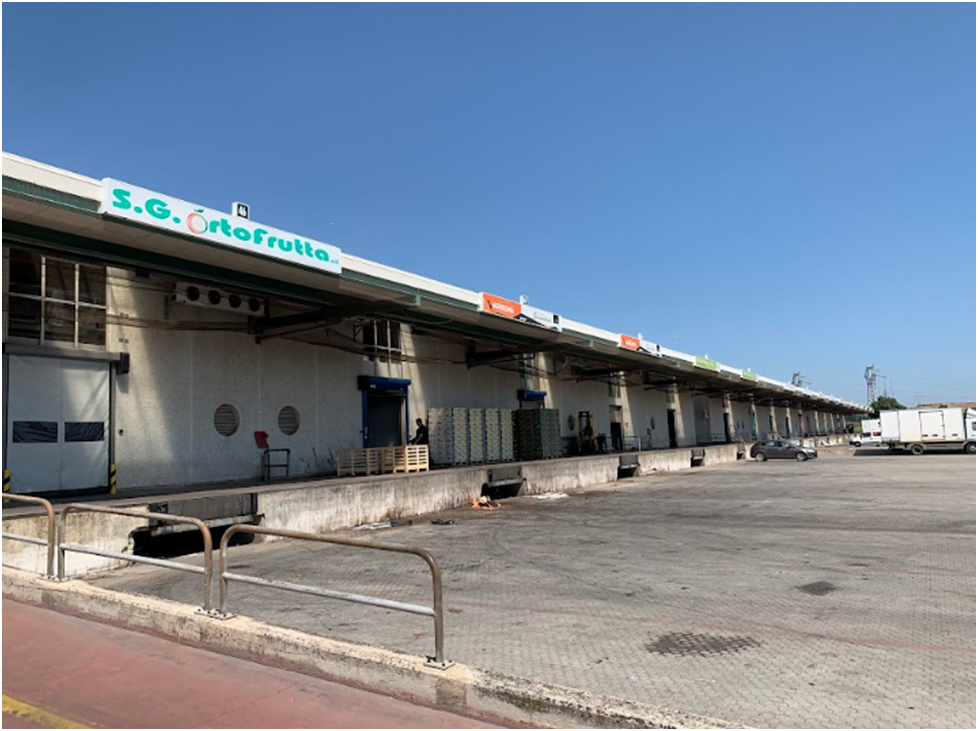
The fruit and vegetable pavilions inside:
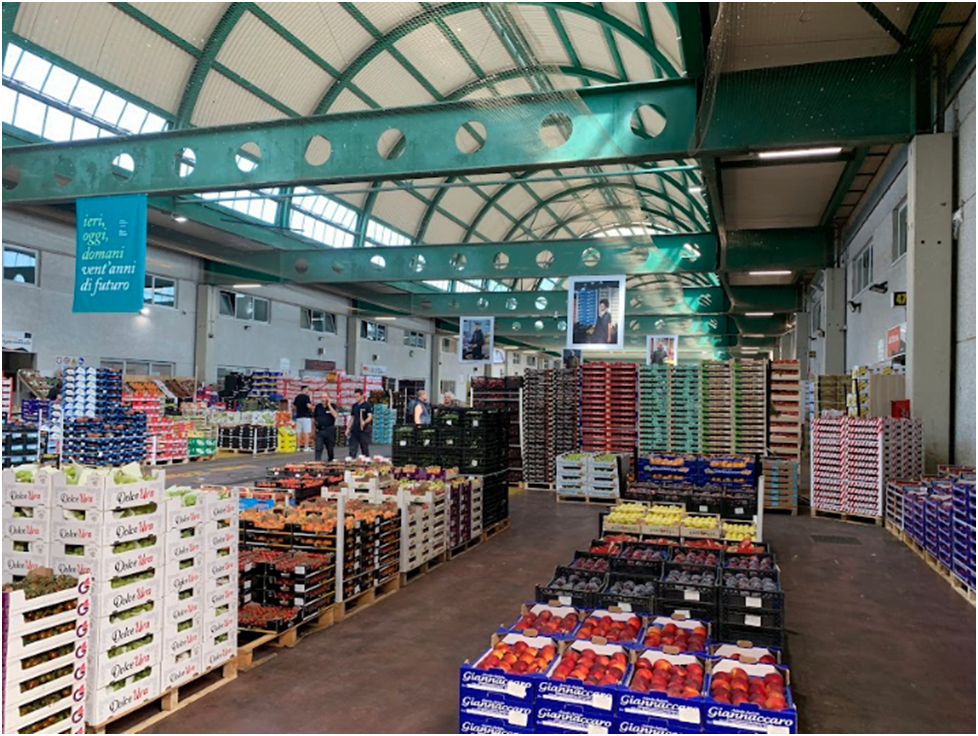
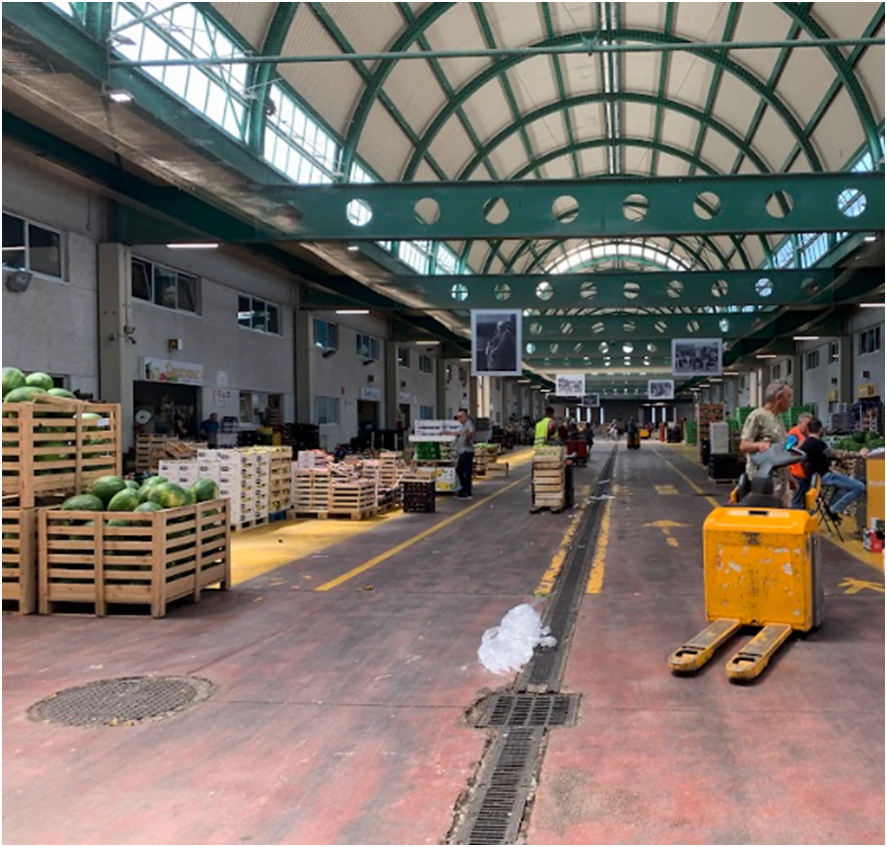
One of the wholesale market’s trading outlets:

There are two categories of sellers at the wholesale market: wholesale companies and growers of fruits and vegetables, with a one-to-one ratio approximately between them. However, the renting cost will be similar both for growers and wholesale companies.
Wholesale companies offer the produce, which they have purchased from importers or growers of fruits and vegetables (often right at the wholesale market). Meanwhile, growers rarely rent a separate outlet alone and prefer to cooperate, preparing a trading schedule for each member of such an association.
Thus, growers are able both to reach relatively large buyers of their produce and save on rent payments. The wholesale market tracks the products’ region and place of origin; therefore, growers can sell only those fruits or vegetables that are indeed grown by them.
The signboards of growers’ associations and unions are green, while wholesale companies’ names are given on white background. In particular, this allows restaurants with locality focus to be sure that they make business directly with farmers rather than wholesale companies, which purchase products from other regions of the country.
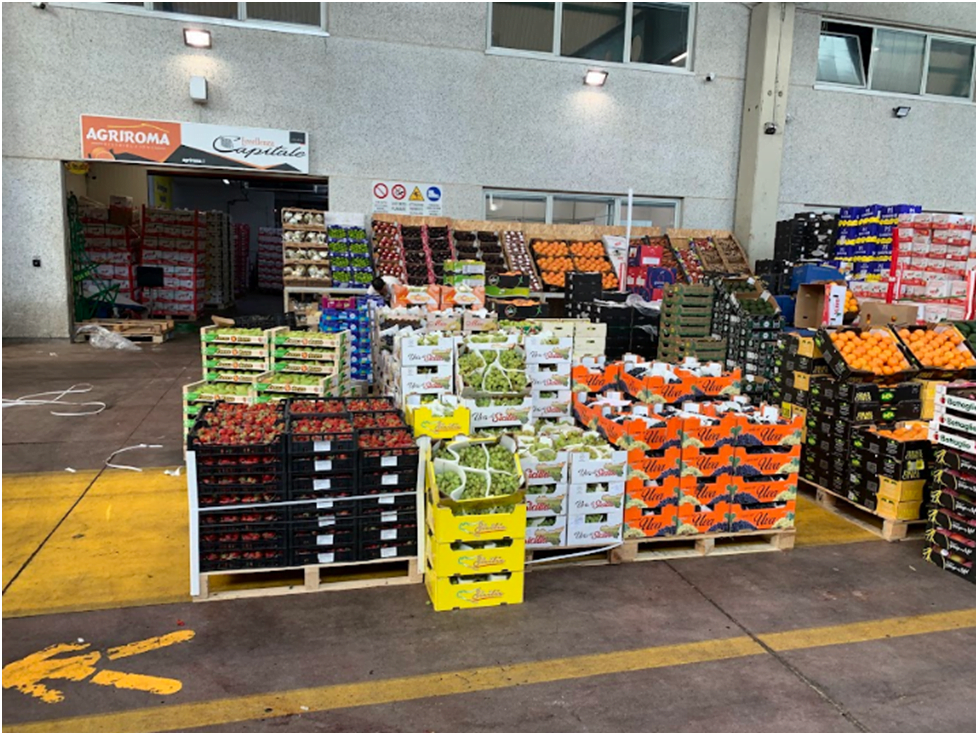
The stonefruit season is in full swing:
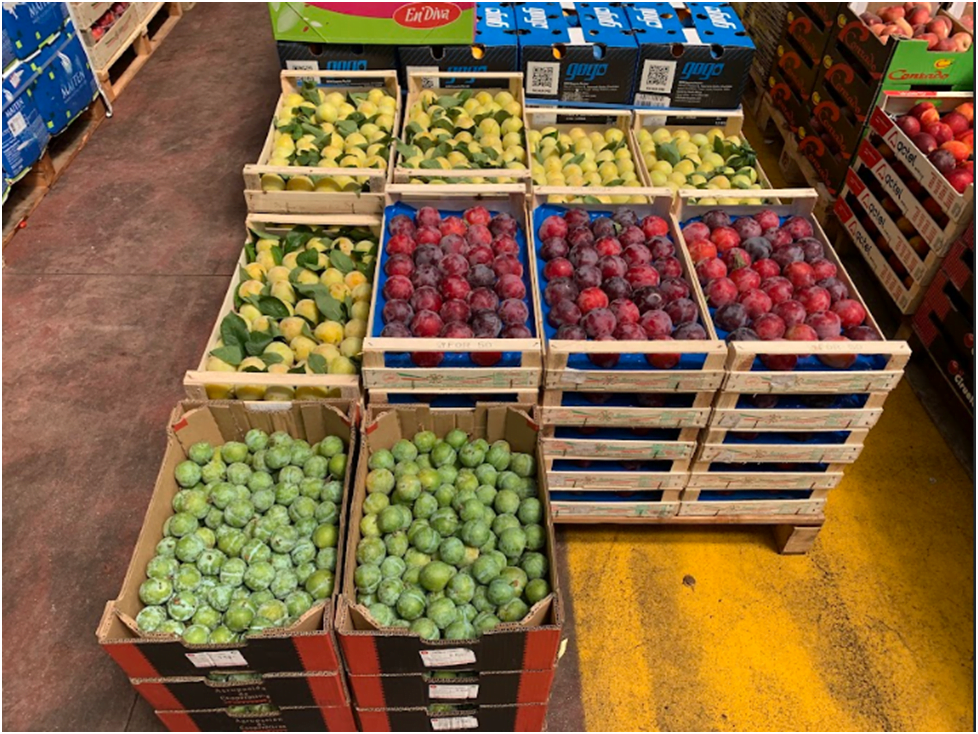
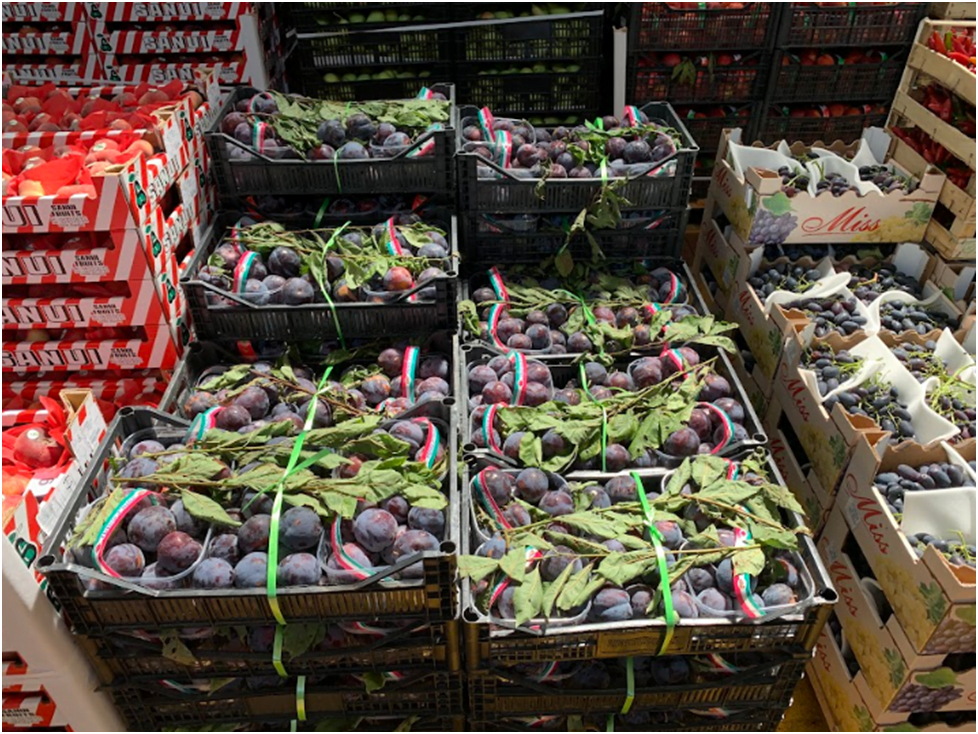
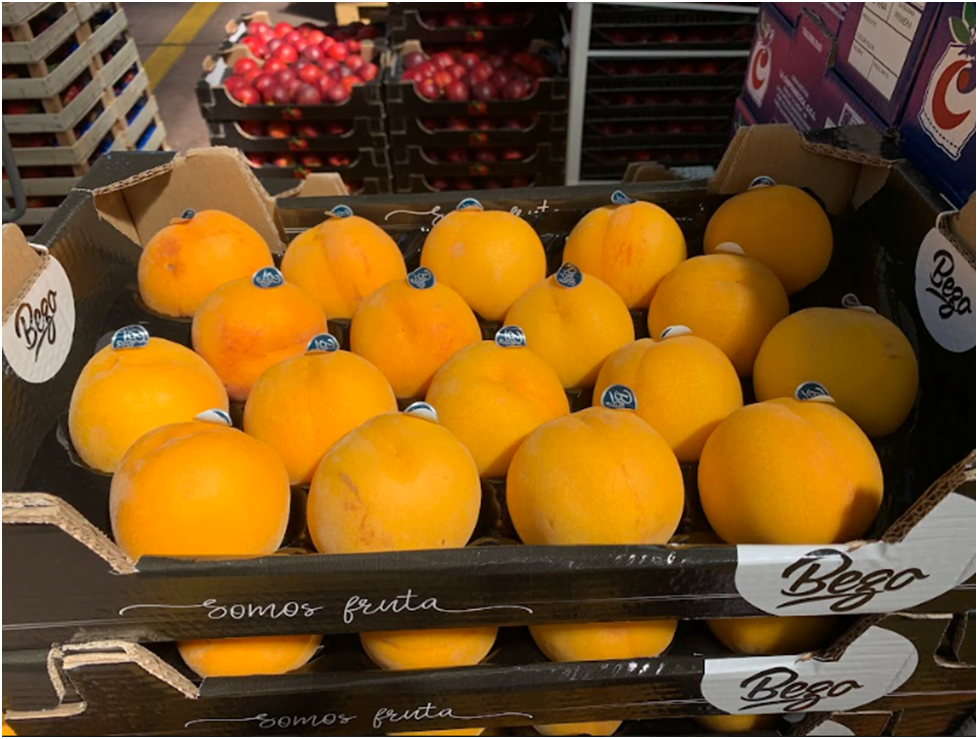
A vast variety of local tomatoes (red, black, yellow, green, beefsteak, plums, on-the-vine, cherry, etc.):
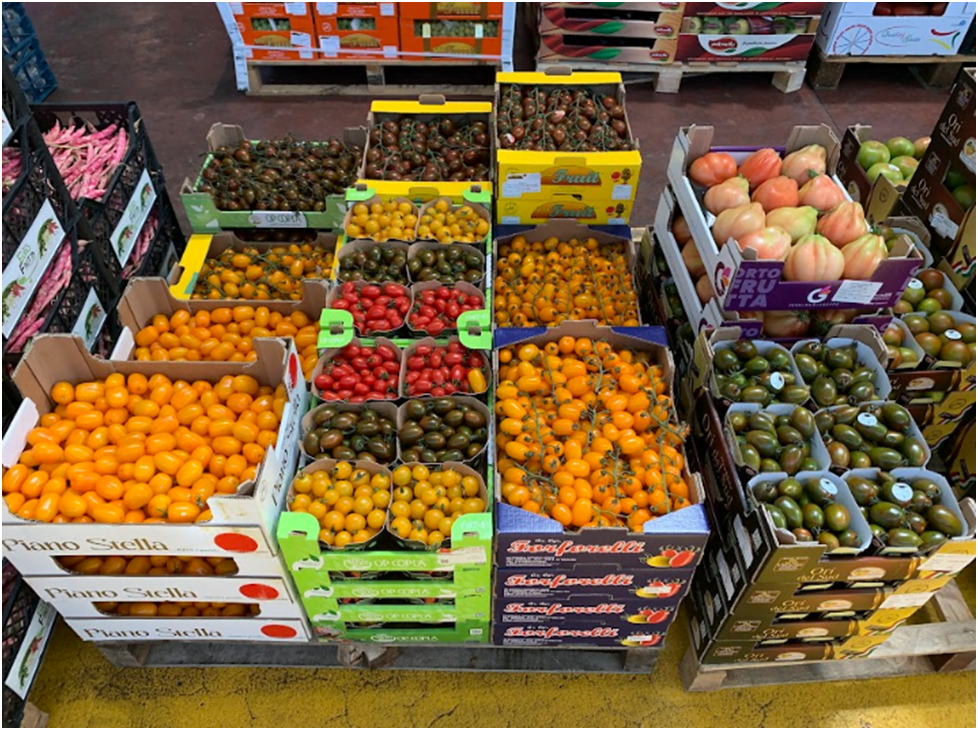
By the way, it would be a surprise for many farmers from the post-Soviet countries that there are no offers of round red tomatoes, which are very popular there, but not in Italy.
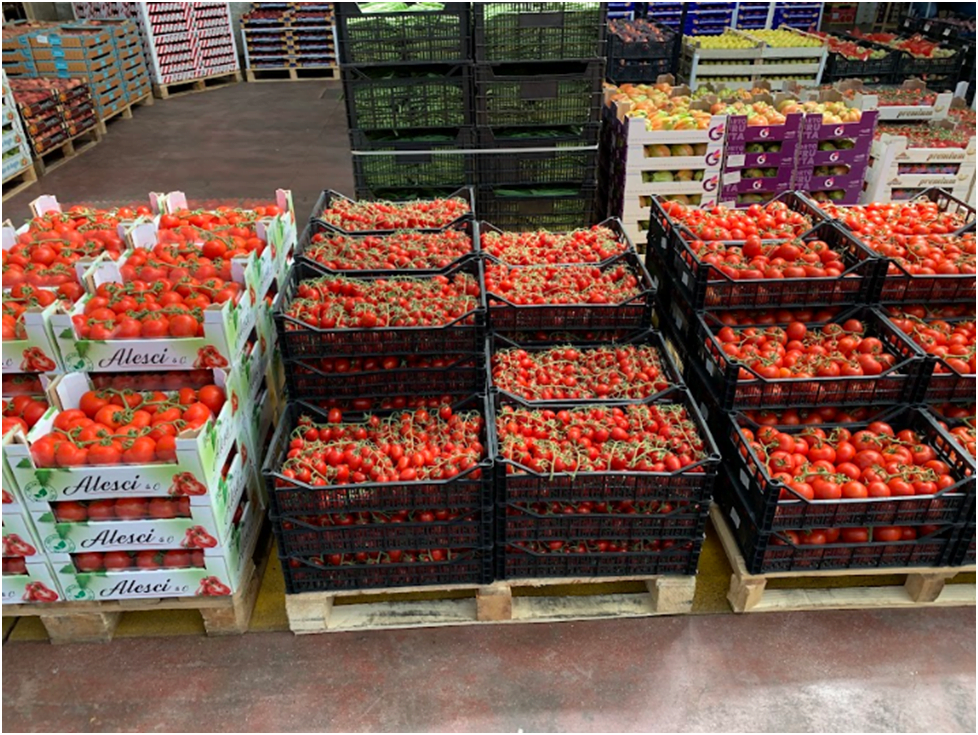
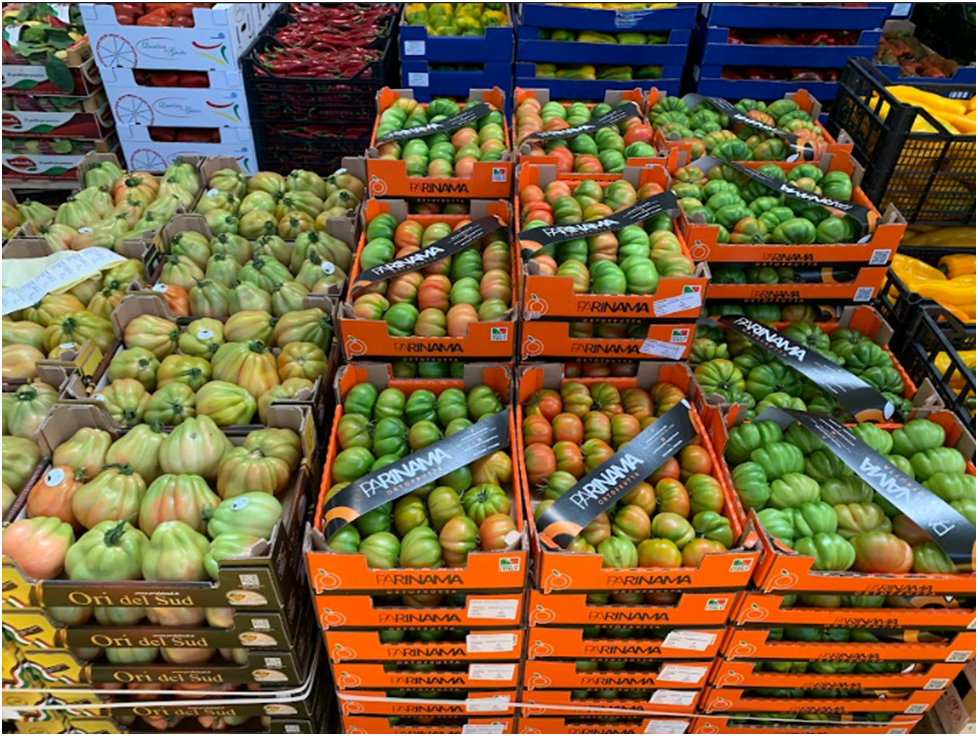 A wide range of fresh aromatic herbs:
A wide range of fresh aromatic herbs:
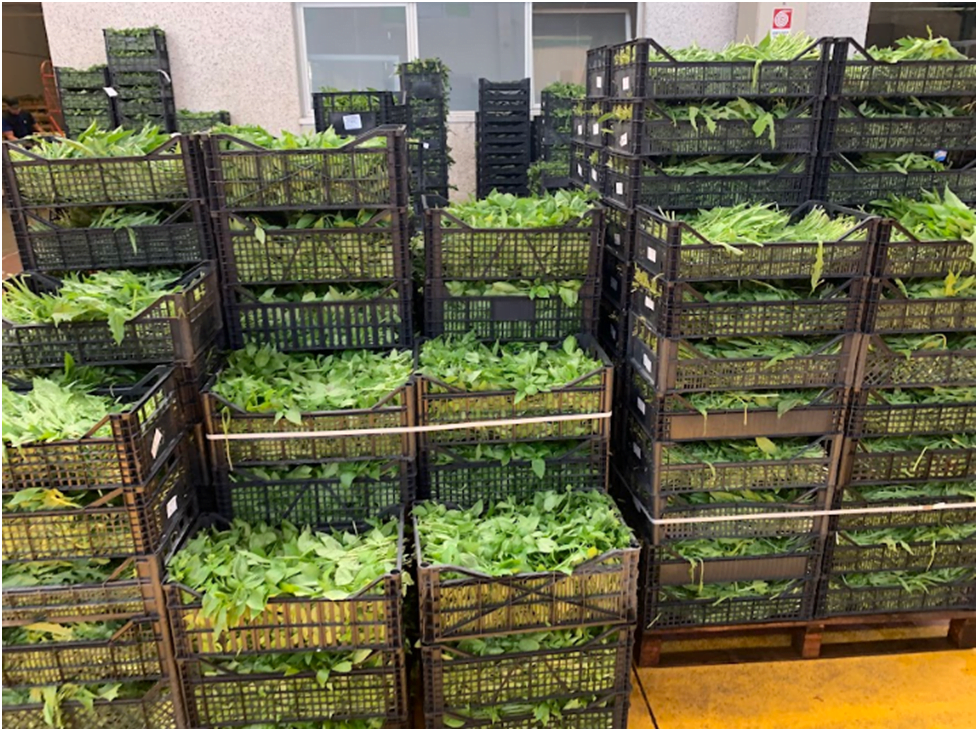
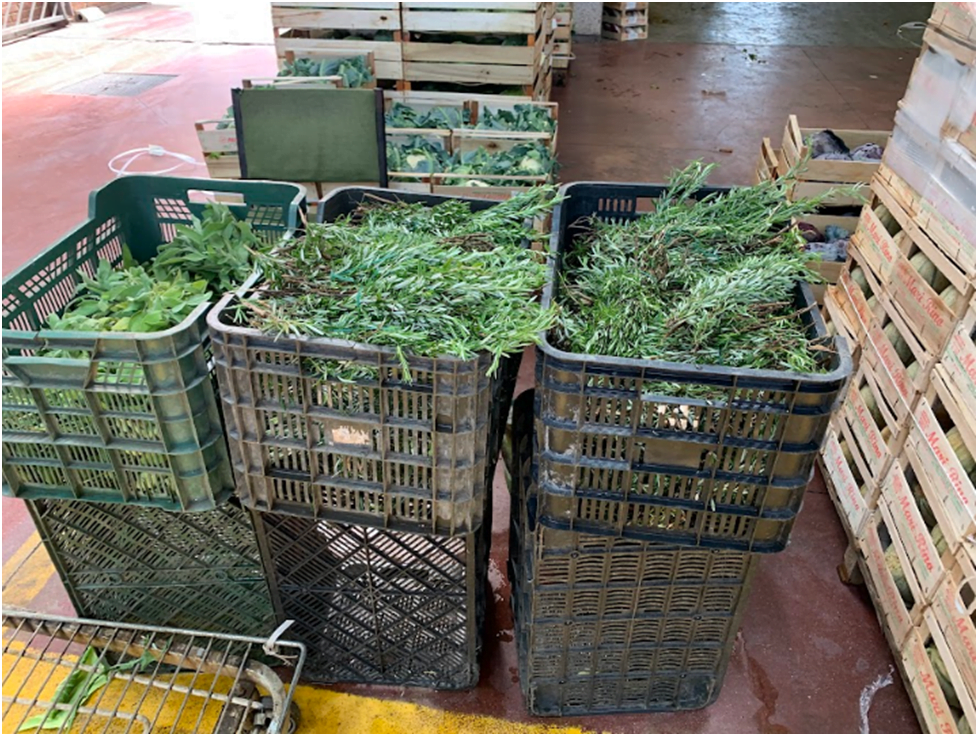
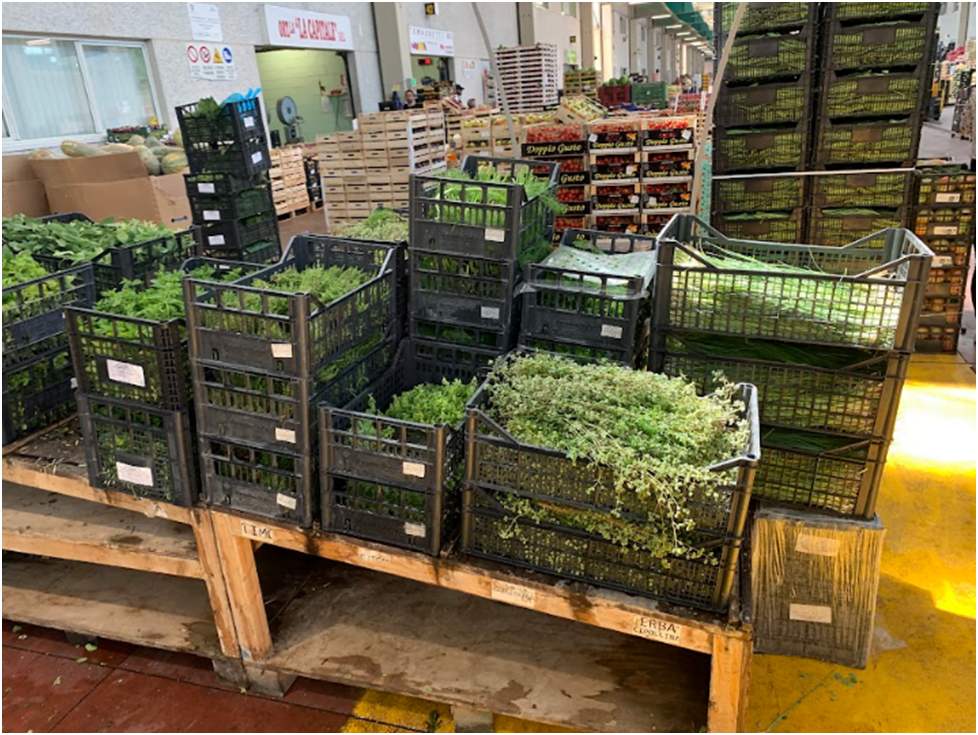
Citrus and tropical fruits:
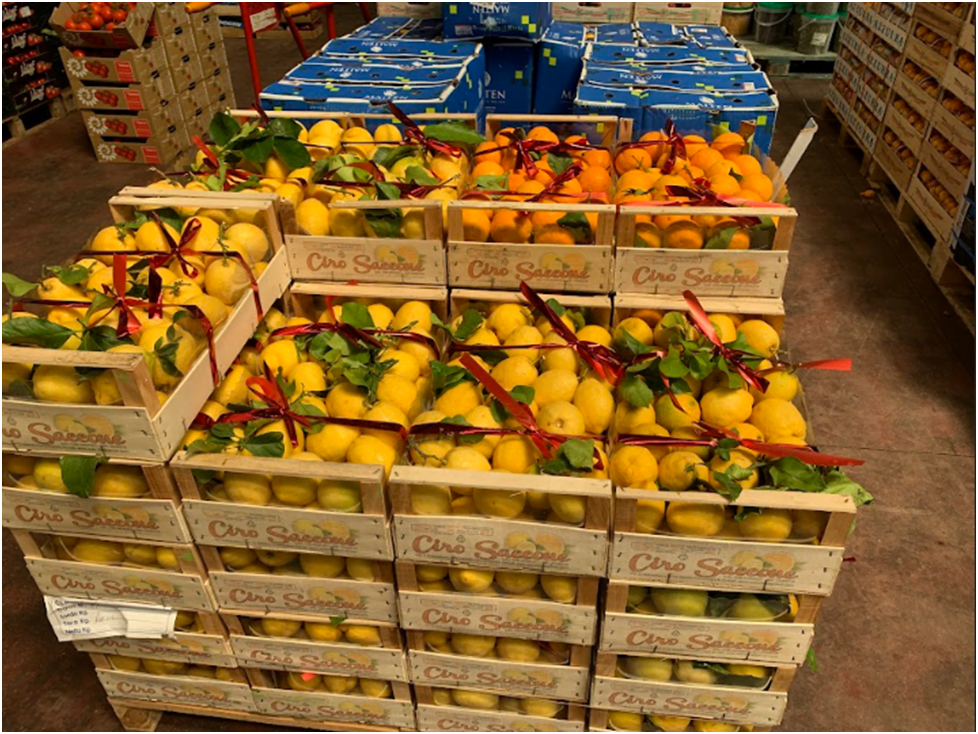
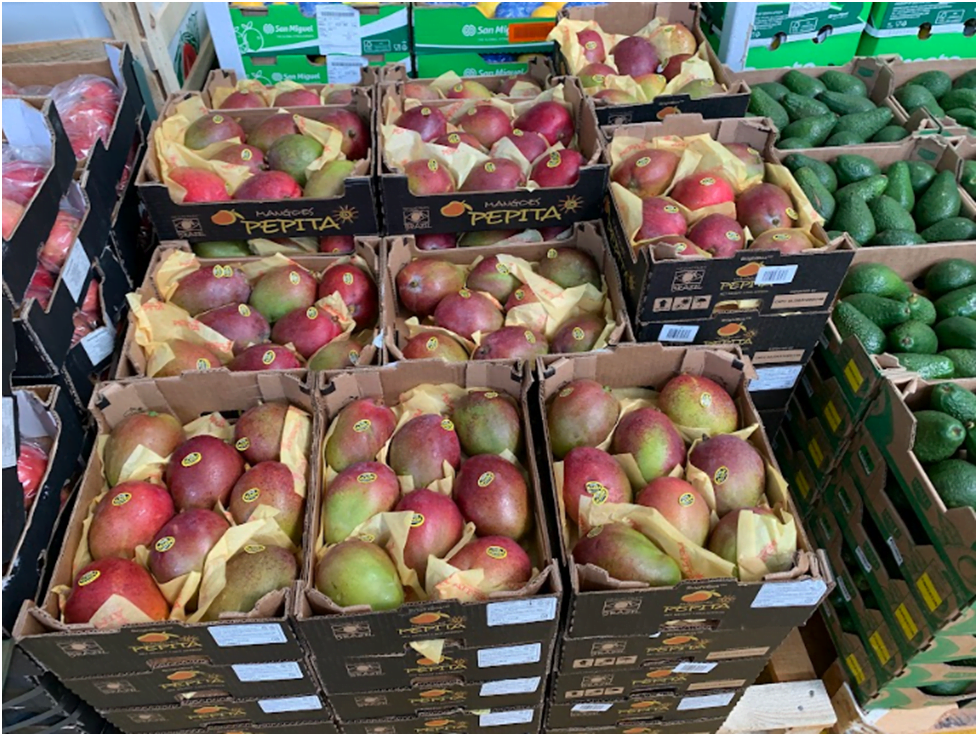
Pomegranates and grapes:
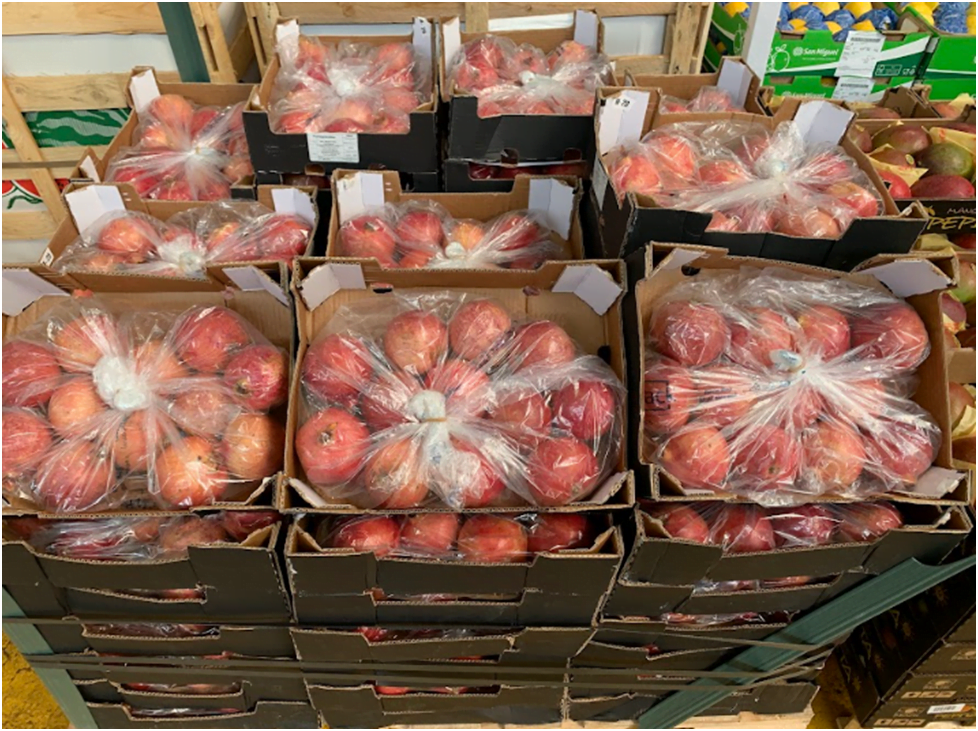
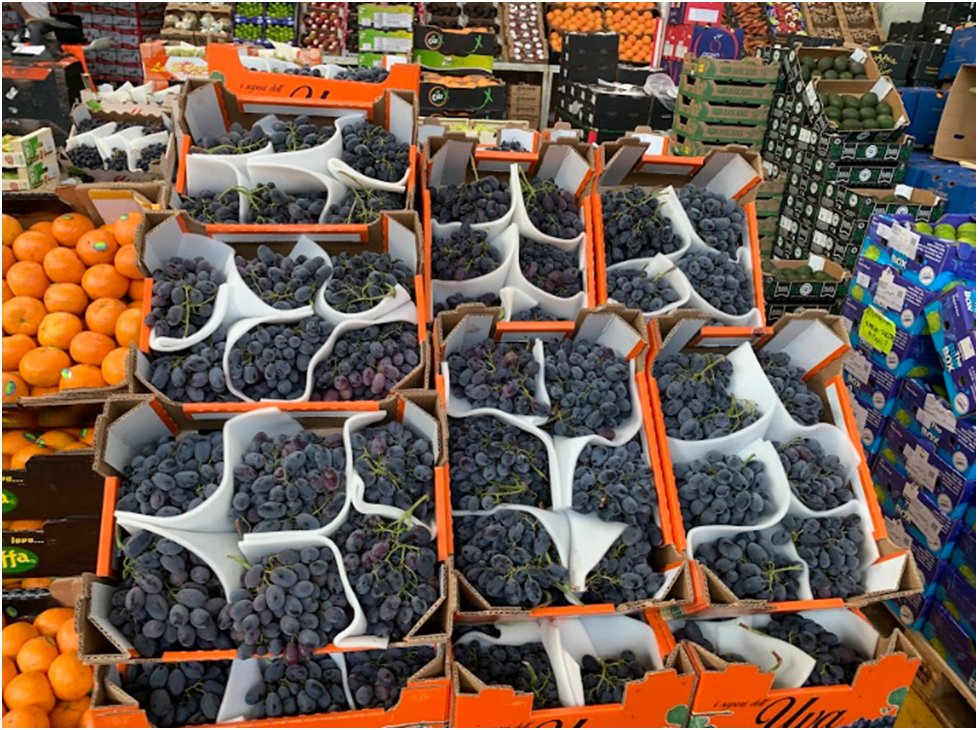
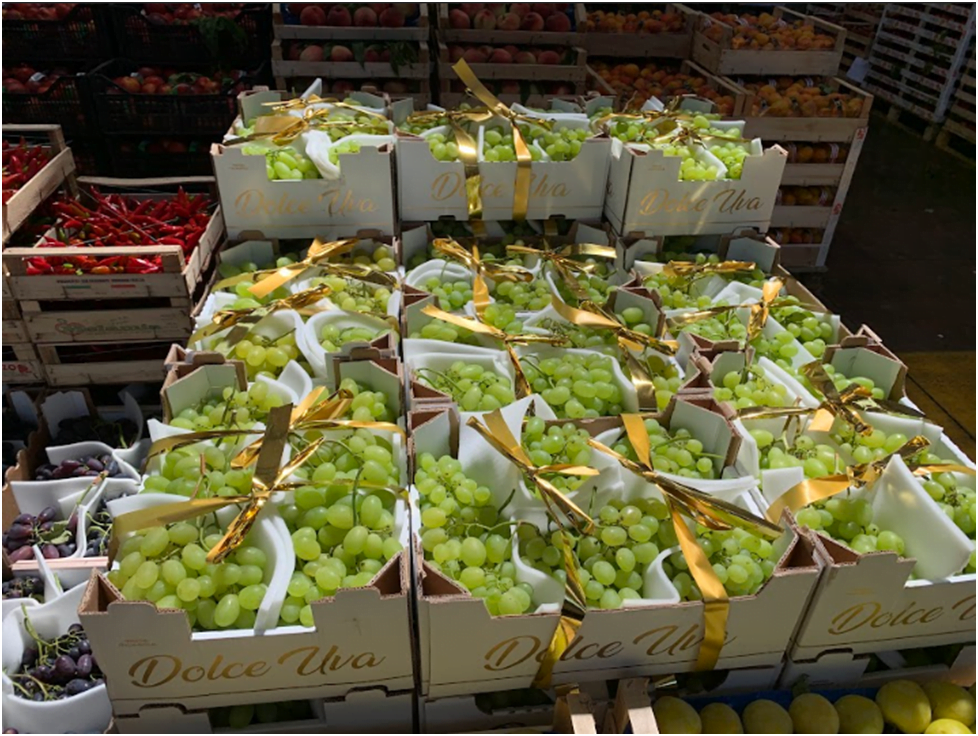
Continuation of the tour in the second part.
The use of the site materials is free if there is a direct and open for search engines hyperlink to a specific publication of the East-Fruit.com website.




